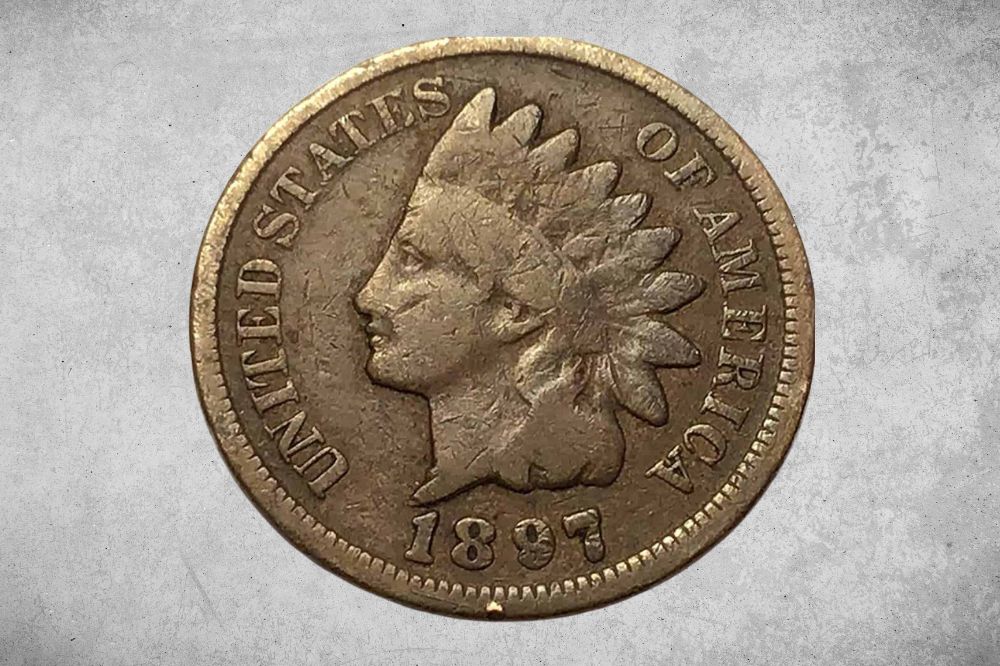Have you recently gotten your hands on an 1897 Indian head penny? Are you wondering how much it’s worth today? Are you curious about its history? Well, that’s what we’re going to talk about today.
In this post, we are going to talk about the 1897 Indian head penny value, its features, and its history.
1897 Indian Head Penny Details
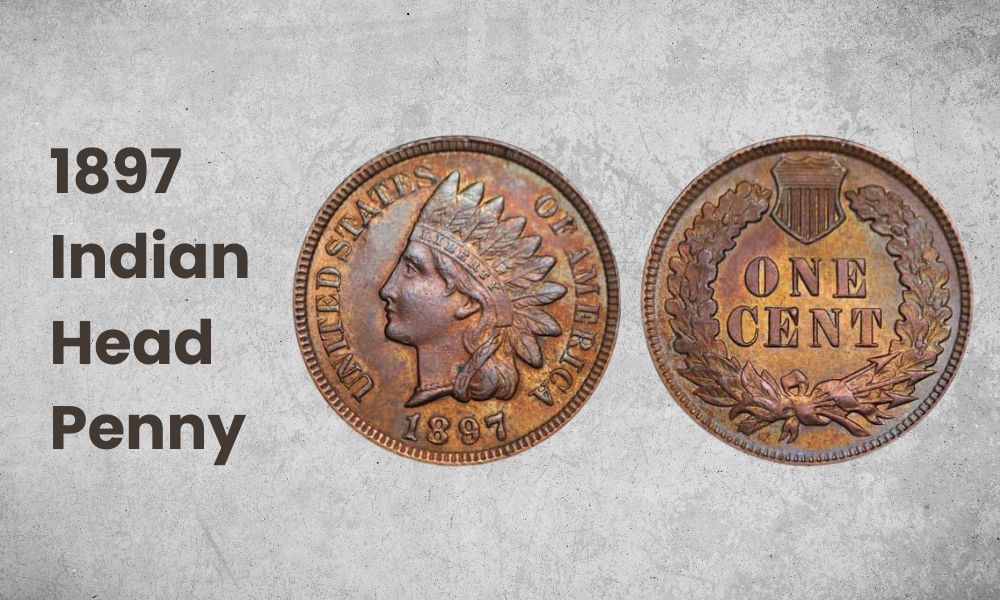
- Category: Indian Head Pennies
- Engraver: James B. Longacre
- Edge: Plain
- Diameter: 19 mm
- Mass: 3.11 g
- Thickness: 1.5 mm
- Composition: 95% copper, 5% zinc & tin
- Mint: Philadelphia (P)
- Mintage: 50,466,330
- Original value: $0.01 (one cent)
The Obverse Design of the 1897 Indian Head Penny
The designer of the 1897 head penny, James Longacre, engraved the image of Lady Liberty wearing an Indian headdress on its obverse. Around this image near the coin’s top and side edges, he further engraved the words “United States Of America”.
He also engraved “1897” at the bottom edge of the coin, below Lady Liberty’s neck. It is said that James chose to go with this design to honor America’s emerging identity far from its British roots.
The Reverse Design of the 1897 Indian Head Penny
On the 1897 Indian head penny’s reverse side, the words “ONE CENT” are inscribed in the middle to represent its face value. The letters are so big that the two words don’t fit in a single line; the word “CENT” is below “ONE”.
On top of the word “ONE,” there is a shield with seven horizontal lines on its top and six vertical lines on its bottom. The vertical lines start from the bottommost horizontal line to the bottom of the shield. These 13 lines symbolize the first 13 US states.
Beyond that, there is an oak wreath around the words starting from each side of the shield and running around the entire coin. At the bottom of the coin, under the word “CENT”, there’s a ribbon that ties three arrows to the wreath, symbolizing war.
Also Read: Top 15 Most Valuable Indian Head Penny Worth Money
1897 Indian Head Penny Value Chart
| 1897 Indian Head Penny Value Chart | |||
| Quality | 1897 No Mint Indian Head Penny | 1897 No Mint Indian Head Red Brown Proof Penny | 1897 No Mint Indian Head Red Proof Penny |
| G4 | $3.30 | N/A | N/A |
| VG8 | $3.89 | N/A | N/A |
| F12 | $5.70 | N/A | N/A |
| VF20 | $9.13 | N/A | N/A |
| EF40 | $17 | N/A | N/A |
| AU50 | $28 | N/A | N/A |
| MS60 | $45 | N/A | N/A |
| M63 | $74 | N/A | N/A |
| PR60 | N/A | $176 to $211 | $260 to $300 |
| PR61 | N/A | $221 to $254 | $292 to $336 |
| PR62 | N/A | $260 to $300 | $325 to $374 |
| PR63 | N/A | $300 to $344 | $364 to $419 |
| PR64 | N/A | $422 to $486 | $585 to $673 |
| PR65 | N/A | $780 to $897 | $1,880 to $2,160 |
1897 Indian Head Penny Value and Varieties Guide
1897 No Mint Mark Indian Head Penny Value (P)
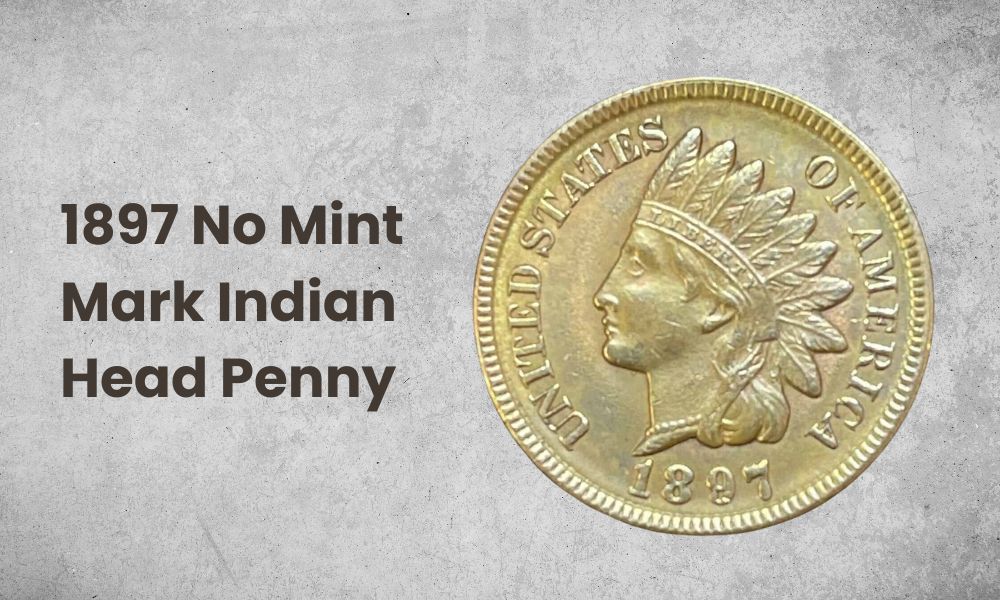
- Type: Indian Head Cent
- Mint: None
- Minting place: Philadelphia
- Year: 1897
- Edge: Plain
- Mintage: 5,464,392
- Engraver: James B. Longacre
- Original value: $0.01
- Current value: $1 to $74
- %Composition: 95% copper, 5% zinc & tin
- Mass: 3.11 g
- Diameter: 19 mm
In 1897, 5,464,392 regular strike Indian head cent coins. They all had no mint mark and were produced in Philadelphia. Since there are so many, they are in low demand now. And to most collectors, they are not more exceptional than Indian head cent coins of other years.
As such, they are affordable. You can get an average-quality coin for as low as $1. On the other hand, you can get a mint state coin for $45 to $74. Keep in mind that mint state 1897 Indian head cent coins are available in 3 colors; red, brown, and red-brown.
Interestingly, these colors affect the value of the coins. The brown coins are the most available and affordable while the red ones are the least available and most expensive. On the other hand, the red-brown ones are in the middle both in price and availability.
As such, a red 1897 Indian head penny that has a grading of MS67 or over can go for thousands of dollars. However, these coins are very rare and are an outlier at this point.
1897 No Mint Mark Indian Head Proof Penny Value (P)
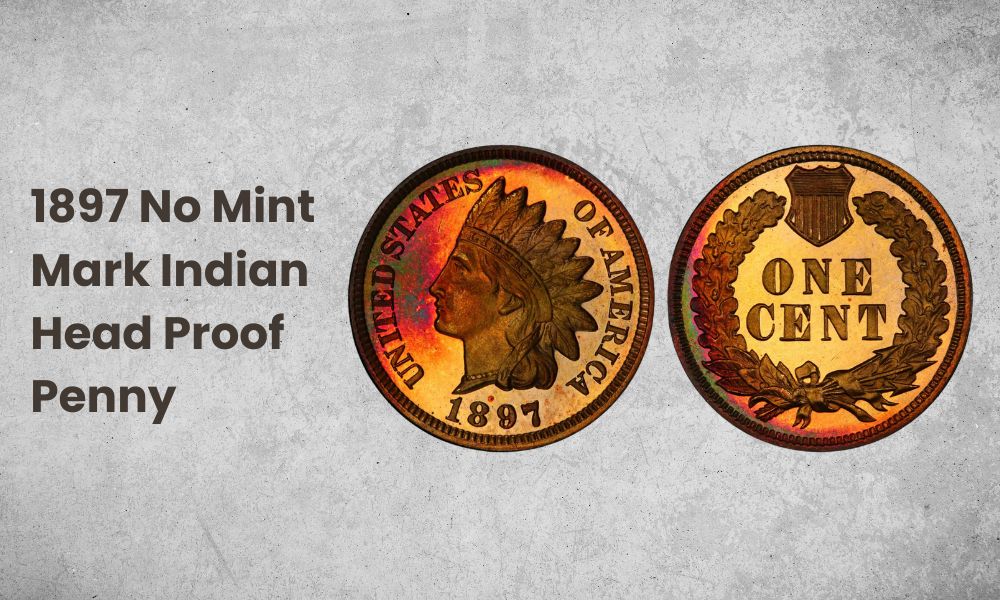
- Type: Indian Head Cent
- Mint: None
- Minting place: Philadelphia
- Year: 1897
- Edge: Plain
- Mintage: 1,938
- Engraver: James B. Longacre
- Original value: $0.01
- Current value: $169 to $2,160
- %Composition: 95% copper, 5% zinc & tin
- Mass: 3.11 g
- Diameter: 19 mm
Only 1,938 proof 1897 Indian head cent coins were minted. They all don’t have a mint mark and were produced in Philadelphia. They are hard to find and are usually more expensive than their regular strike counterparts.
The red ones are particularly expensive; you may have to spend over $2,000 on a PR65 one.
A PR60 red coin can cost you up to $300 while its red-brown counterpart can cost you around $200.
1897 Indian Head Penny History
The Indian head cent was launched in 1959 and continued to be produced each year until 1909. It was designed to replace the Flying eagle penny. James B. Longacre designed the whole series. He was the chief engraver at the Philadelphia mint.
This was the only facility allowed to strike one-cent coins until 1907. As such, all the Indian head pennies minted between 1959 and 1907 had no mint mark. However, some of those minted in 1908 and 1909 have an “S” mint mark.
This is because they were produced at the San Francisco facility. However, everything came to an end in 1910 when the Lincoln penny replaced the Indian head cent.
Engraved with the image of the 16th US president, Abraham Lincoln, the latter penny is still minted and used to date. It was the first penny to bear the image of a real person. It has the same diameter as the Indian head cent; 19 mm. But it’s thinner.
Keep in mind that the Indian head pennies were noticeably smaller than one cent coins that came before them. This was done to cope with the increasing copper prices and production costs at the time. In 1864, the pennies also became lighter and had a different composition.
The pennies minted from 1859 to 1863 weighed 4.67 g and were 88% copper and 12% nickel. On the other hand, those minted from 1864 to 1909 weighed 3.11g; they were 95% copper and 5% zinc & tin.
Another change that was made during the 50-year period that the Indian head penny was produced was in the reverse design. In the 1859 design, the wreath featured was a laureth one and it had no shield or arrows.
From 1860, the coin featured an oak wreath, with arrows and a shield.
Also Read: Top 20 Most Valuable Old Pennies Worth Money (Penny Collection)
1897 Indian Head Penny Grading
Like any other coin, the 1897 Indian head pennies are usually graded by professional agencies like PCGS and NGC. To accurately do this, these professionals look at the condition of the coin.
Ultimately, they give it a number on a scale of 1 to 70, with the latter being the highest grade. Beyond that, they place it in categories like good, fine, extremely fine, and uncirculated, with the last one being the category with the highest quality.
List of 1897 Indian Head Penny Errors
1. 1897 Indian Head Penny Double Strike
A double strike is an error that happens when a coin isn’t properly ejected from a striking chamber after the striking is done. Since it’s stuck, the coin ends up being struck again. So when you look at it, you can see a pattern that shows up twice.
NGC has sold a cleaned double-struck 1897 Indian head penny for over $335 before. If it was not cleaned, it would have undoubtedly sold for more.
2. 1897 Indian Head Penny Repunched Date
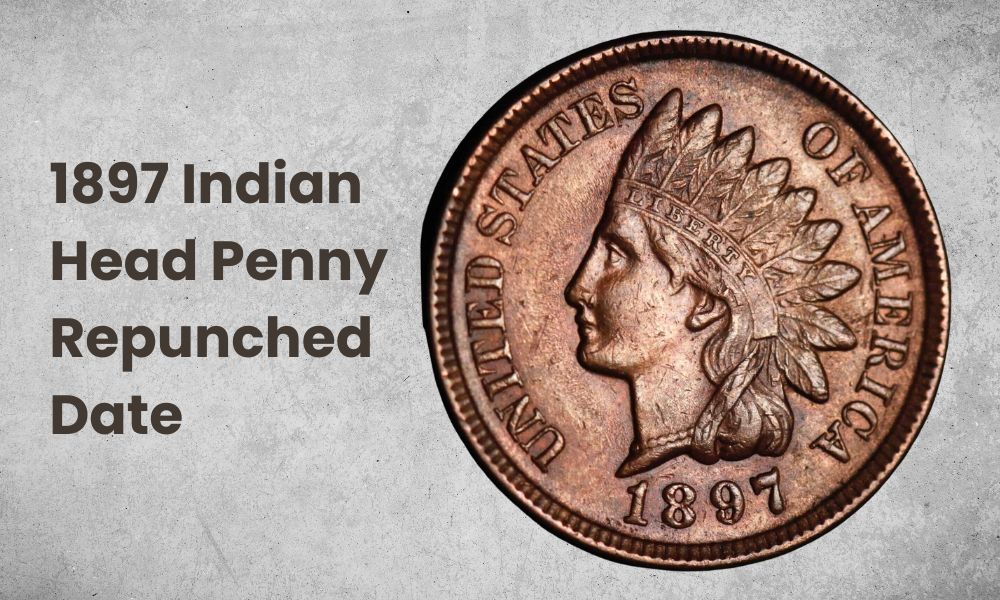
As its name suggests, a repunched date is an error evidenced by a date that has been punched on the coin more than once. When this error occurs, you can see parts of the first or second punch in areas where they didn’t overlap.
Also, the numbers can appear thicker than usual. In 1897 Indian head cent coins, this error is quite valuable, especially if the coin is red and in mint state condition. A PCGS-graded MS67 red 1897 Indian head penny with this error was sold for over $31,000.
A similar coin graded MS63 with a red-brown color sold for over $150. An MS65 version of this one went for over $500.
3. 1897 Indian Head Penny Misplaced Date
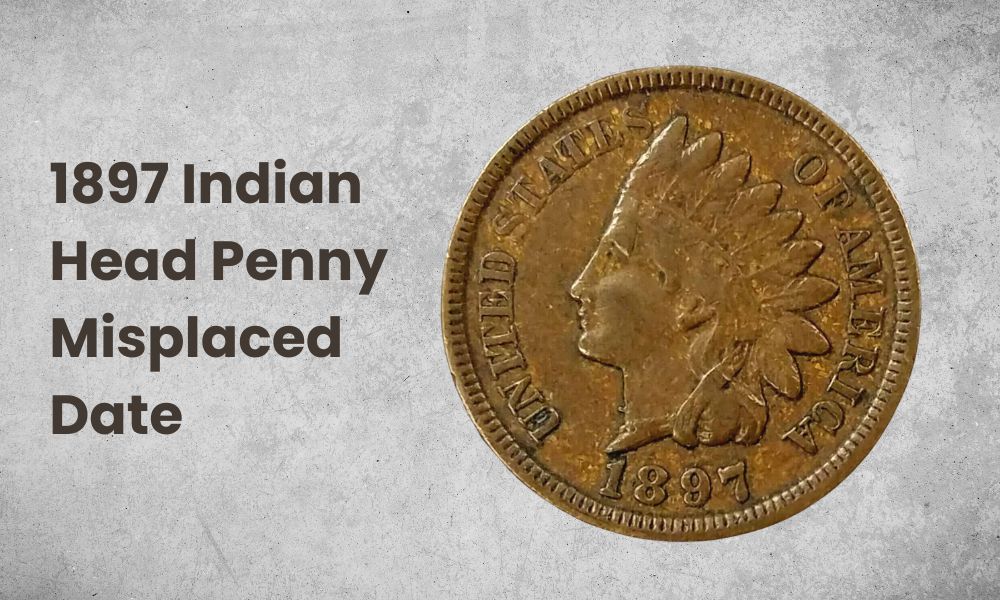
A misplaced date error occurs when a date is punched in an area that it shouldn’t be in. This is usually done in a part of the coin where it would not be seen after striking because the new engravement would hide it.
While this error can be accidental, it can also be the result of a mint employee trying to test a date-digit punch. When this error occurs, you may see all four digits or just one. They are commonly found near the base of the bust of the engraved image or below the date.
In the 1897 Indian head cent, this error commonly shows up as a 1 sticking out of Lady Liberty’s neck. It’s more noticeable in lower-grade pennies. However, the high-grade ones are the most expensive, with the red ones leading the pack.
An AU55 1897 Indian head penny is worth around $450. On the other hand, a red MS64 can go for around $4,000.
1897 Indian Head Penny FAQ
How can you tell if an Indian head penny is real?
The easiest way to tell whether an Indian head cent is real is to look at its date. Fake pennies tend to have dates whose numbers are distorted and uneven; they just look off.
The high-quality fakes may require you to look for die markers or check for planchet quality to tell them apart. If you don’t know how to do this, you may have to consult a professional to help you out.
What is the oldest Indian head penny?
The oldest Indian head cent is the one minted in 1959. This is when the mint switched from Flying eagle penny. In that year, the Philadelphia mint produced 36,400,000 Indian head pennies.
No other facility was allowed to mint them and all the pieces produced lacked a mint mark.
What makes an Indian head penny rare?
Proof, mint state, and error Indian head cent coins are the rarest. The proof and error coins are rare because they account for a low percentage of the total number of Indian head pennies produced.
On the other hand, mint state pennies are rare because it’s difficult for a coin produced over a century ago to remain in such a good condition up to date. Ultimately, it’s the rarity of such coins that makes them more valuable in modern times.
Where can I sell pennies worth money?
The easiest place to start is your local coin store/dealer. Alternatively, you can use online stores like eBay; these can even let you see how much other people have been selling the same coins for.
For best results though, join a coin club so that you can learn more about the coins you have, their worth, how they can be graded, and how to get buyers.
How do you know if your Indian head penny is clean?
To check whether your penny has been cleaned, use a magnifying lens to look at it in the light; check all angles. If you notice that it has fine lines, it’s been cleaned. Unfortunately, this devalues it. Even polishing these coins devalues them.
For the best prices, don’t even remove debris from any coin you get your hands on.
Are Indian head pennies lucky?
Some people believe pennies are good luck. Others believe that this is only the case if they have their heads side up. Some even think that Indian head cent coins are lucky because they are rarer than some other kinds of pennies.
However, there’s no evidence to support this belief.
